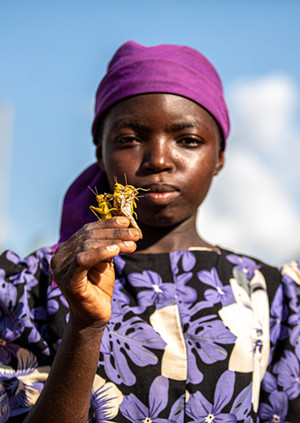
A girl shows the desert locusts in Kitui County, Kenya, Feb. 20, 2020. (Xinhua/Zhang Yu)
The locust outbreak plaguing East Africa calls for a concerted international response as the most dreaded insects devour millions of hectares of vegetation in their cross-border migration, exacerbating the already fragile food security situation in the region.
The desert locust, which can travel 150 km in a single day, is deemed the most devastating of locusts. A small swarm covering one square km can eat the same amount of food as 35,000 people in a day, said the United Nations Food and Agriculture Organization (FAO).
"The situation remains extremely alarming in Kenya, Ethiopia and Somalia where widespread desert locust infestations and a new generation of breeding threaten food security and livelihoods in the region," it noted Tuesday.
The locusts most recently invaded South Sudan from Uganda, and the South Sudan government is seeking funds worth 20 million U.S. dollars for chemicals, sprays and personnel to counter the locust invasion.
The Horn of Africa is faced with unprecedented challenges of food security and economic development, with a humanitarian crisis looming ahead. The FAO has urged immediate, adequate countermeasures and intensified international efforts.


















































